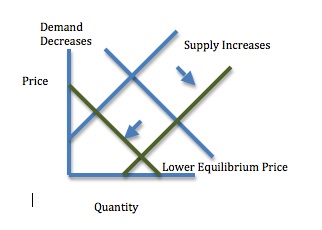Perhaps it’s the perfect storm for crude oil prices. Grounded planes, consumer lockdowns, and skyrocketing unemployment all add up to less need for oil. Meanwhile, with the Saudis gushing crude, supply is soaring. So yes, when you combine less demand with more supply, you get lower prices…very low prices.
The price of WTI (West Texas Intermediate–the domestic benchmark) has plunged from $60 a barrel at the end of 2019 to $21.51 last week.
On the bright side, cheap oil lowers the price of the thousands of goods that contain it like surfboards and shag rugs.
However, there is a downside.
The Downside of Cheap Oil
As the price sinks, firms see the market moving closer to their breakeven point. At $21.51, the shale producers (including Bakken) and traditional producers are in negative territory. Below breakeven, firms could shut down.
In each of the drilling areas, none of the existing wells appears to be covering operating expenses:
Meanwhile, as the price of oil plunges so too does the incentive to drill new wells:
The result is massive disruption of the energy sector of the economy. We could wind up with many fewer firms.
Our Bottom Line: Creating Cheap Oil
We can illustrate the WTI price drop with shifts in the demand and supply curves.
The demand curve moves downward to the left because its utility–its usefulness–has decreased. During the coronavirus lockdown, we are driving less, flying less, and moving less cargo. In other words, oil has less utility.
Meanwhile, on the supply side, production has been propelled upward by the clash between Saudi Arabia and Russia.
Below, you can see that the equilibrium price is way down:

Long ago, asked about the price of Standard Oil stock, John D. Rockefeller provided wisdom about all markets, including the price of oil.
“I think it will fluctuate.”
My sources and more: For the entire story, do go to the Dallas Fed. Then, for another downside that we did not discuss, this Washington Post article connects cheap oil to the environment.









